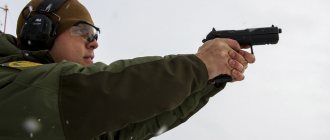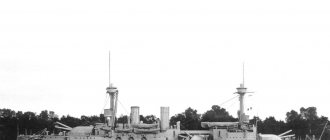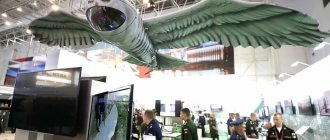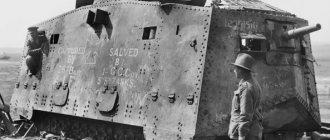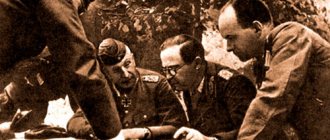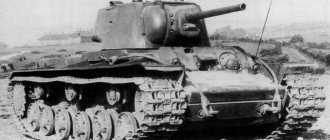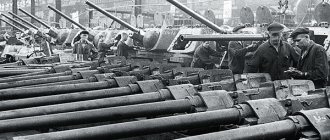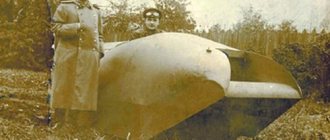04.09.2020
Tank troops are the striking force of the army
And any military expert will confirm that this is true. Without tank support, it is difficult to imagine a successful offensive operation, especially when it comes to fortified enemy positions. Although, in fairness, it is worth noting that the Russian Tank Forces are not just tanks.
This type of troops also includes other armored vehicles: infantry fighting vehicles, self-propelled artillery, tractors, armored personnel carriers and much more. Even specialized educational institutions and military command bodies are part of the tank forces. So you must understand that this is not just an armada of powerful armored vehicles, but a complex structure.
Without the Tank Forces, the losses of Soviet (and Russian) combat formations would have been more significant. Take, for example, the Great Patriotic War, where tanks played one of the decisive roles. Or, the conflict in Georgia in 2008. After all, without powerful tank support, it might not have ended so quickly. And who knows what it would all develop into. So it is difficult to overestimate the role of the Tank Forces in the Russian army (as in other powerful armies of the world).
By the way, for all tankers, the Voentpro military store not only has information materials about the branch of the military, but also high-quality souvenir paraphernalia that will always remind you of the best moments of your service.
Armament of the Russian Tank Forces
Once upon a time, Soviet tank forces could be considered one of the best on the planet (if not the best). For example, the Soviets surpassed everyone in the number of tanks. However, for decades, tank forces have been slowly but surely reduced. The saddest period for this type of troops was the “dashing 90s,” when the army lost not only a lot of equipment, but also a lot of professional personnel.
However, in recent years the trend has changed slightly. At this stage, full-scale rearmament is underway, which in the future should significantly increase the combat effectiveness of the Russian Tank Forces, even with a decrease in the number of combat vehicles themselves.
But while complete rearmament is still far away, I would like to talk about the combat vehicles that were in service with the Russian army and allowed it to dictate its unwavering will to potential opponents for many years.
Tank T-90A/K/AK/S
The main battle tank of the Russian Federation, in service with the Tank Forces in several modifications. The tank has earned high marks not only from domestic but also from many foreign experts. The total number of combat vehicles is more than 500 in the Russian Armed Forces, about 1000 have been exported, and there are also a number of auxiliary vehicles based on the T-90.
In addition to its impressive combat characteristics, the vehicle’s versatility in combat use in various regions with extreme climates should be noted. The T-90 has proven itself to be a reliable MBT in the North, in the deserts of Saudi Arabia, the humid jungles of Malaysia and India, something that its competitors cannot boast of.
Tank T-80B/BV/U
A pretty good fighting vehicle, although a little outdated. There are more than 4,000 of these vehicles in service with the Russian Federation, but it is planned to completely remove them from the “combat post” and replace them with more modern models. Time will tell to what extent this will be accomplished.
The specifics of a powerful gas turbine engine (GTE with a power of 1000-1250 hp, depending on the modification) made this MBT ideal for developing success in Europe, but now the military doctrine is different and a similar combat vehicle is losing its relevance as a means of implementing strategy.
Tank T-72A/B
Another “old” tank, which, it would seem, can be taken out of service. But it was decided to modernize the machine at the T-72B3 level. This may be due to the large number of this model – about 9,000 units. It’s a pity to simply “throw away” such a quantity of excellent armored vehicles, to put it mildly. The only question that remains is how well the modernized tank will meet international standards.
Yes, this combat vehicle has performed admirably in various wars, but the early modifications are obsolete and only further modernization will be able to keep the T-72B3 MBT competitive on the modern battlefield.
As mentioned earlier, the Russian Tank Forces include not only tanks. For example, the Russian Federation has about 6,000 infantry fighting vehicles (BMP-2 and BMP-3) in service. There are also several hundred self-propelled anti-tank systems, about 15,000 armored personnel carriers of various modifications and 7 types of combat reconnaissance vehicles with a total number of more than 2,000 units.
Of course, this is not a complete list of what is in service with the tank forces of the Russian Federation, but this is enough to understand how powerful the armored “colossus” is in protecting the borders of Russia. Now, if the Tank troops had not been destroyed systematically for many years, it would have been even better. But the times of “Serdyukovism” have passed and now we can look into the future with optimism.
Tank forces of Russia and the USA. Comparison
To better understand what the military potential of the Tank Forces of the Russian Federation is, let's compare it with another powerful country in the military sense, namely the United States.
Well, let's start with the tanks themselves. We will not go into any technical details, the number of crews, training, testing and other factors, but will talk exclusively about the number of tank forces of Russia and the United States, respectively.
So, the US currently has about 7,000 tanks in service. Not all of them are the latest designs. If we talk about the “top” ones, then there are almost 600 of them in the US Army (Abrams M1A2SEP). As for the Russian Federation, our newest T-90 tank (T-90A and T-90AK) is presented in approximately 500 copies. The differences, so to speak, are not critical. But the total number of Russian tanks is several times higher than that of their overseas counterparts. Thus, even if only a third of domestic tanks are prepared for battle, this will be enough.
Go ahead. Next up is artillery. The US has about 1,500 towed weapons and approximately 2,000 self-propelled guns. Russia has 6,800 self-propelled guns, as well as 7,500 towed guns. The latter, however, will thin out considerably, but even without this, in terms of artillery, the Russian Federation is superior to its competitor.
By the way, Russia also has more MLRS, and significantly: 3500 versus 830 US ones. And, given the fact that artillery is the God of war, the conclusion suggests itself. Moreover, if you look at the advanced models built on the T-90 chassis, for example, the TOS-1A Solntsepek, we will not find similar analogues overseas.
If we talk about infantry fighting vehicles, then the Russian Federation is also superior to the United States. Russia has approximately twice as many infantry fighting vehicles of various modifications in service. But in terms of armored personnel carriers, the States are ahead. America has 16,000 cars, versus approximately 5,000 domestic ones.
Bottom line
What do we have in the end? Many say that the Russian Tank Forces are now in a deplorable state. Nonsense. In recent years, it has been possible to seriously raise the level of combat training of personnel and improve their moral and psychological state. The officers finally began to receive decent pay for their difficult service. Perhaps, if compared with the times of the dawn of the USSR, there is still something to strive for. But progress is obvious.
If we take into account the fact that after the collapse of the Union the Tank Forces were systematically destroyed, then the current state of affairs is not nearly as sad as some alarmist “experts” claim. The number of armored vehicles in Russia is sufficient, there is practically enough qualified personnel, and rearmament is in full swing.
We can talk a lot about the advantages and disadvantages of Russian equipment, but here’s a paradox: where the Russian Tank Forces are located, for some reason our troops always win!
You also need to understand that the “defense industry” is an expensive pleasure and it is not so easy to just take and “change clothes” of the entire Armed Forces. But it’s not easy – that doesn’t mean it’s impossible. In any case, the Russian Tank Forces still have a lot of “powder in the flask”.
Voenpro will also remind you of the opportunity to purchase hundreds of diverse and high-quality souvenirs with tank symbols in our catalogs.
← Tankman's Day New Year's gifts cash on delivery →
Winter military uniform
The creation of high-quality winter workwear is reaching a new level today. The use of new materials allows you to get rid of uncomfortable and unattractive items of clothing of one or another professional nature. Winter workwear today is also distinguished by its high durability and versatility. If we talk about workwear for specialists in military professions, then it should have a number of additional characteristics. Such characteristics should include increased ergonomics of winter military uniform, its excellent insulating qualities, windproofness and at the same time good ventilation.
The armies of the world, which are called upon to operate in conditions of low temperatures, are supplied with a special type of winter military uniform. If we talk about the Finnish army, here the uniform, surprisingly, is developed by forestry specialists. A whole research group is involved in creating the design of the Finnish winter uniform. Several people deliberately wander through Finnish forests and the snow-covered shores of numerous lakes to capture the winter landscape. Next, several thousand photographs and video files are loaded into a computer, which analyzes the color palette and, thanks to a special program, creates a single texture. More precisely, several textures are created at once, corresponding to different types of terrain. And based on these textures, a universal texture is created, which will form the basis for the “war paint” of the overalls (uniforms) of Finnish soldiers. Such amazing care allows us to create truly unique examples of the color scheme of military uniforms and ranger uniforms. The Americans are already preparing to implement a new program that will create 3D coloring of winter workwear (uniforms) for various connections. This texture will allow the American soldier, according to the developers of the uniform, to literally get lost not only among the snow-covered fir trees, but also in fairly open areas. The texture is initially planned to be used for snipers. In the future, it will be used by other members of the American army. It is worth saying that American soldiers do not fight in severe winter conditions, so this uniform is still being produced as prototypes. One can even guess who American fighters imagine as an enemy if they have to conduct exercises in low temperatures on snow-covered training grounds in Alaska.
Russian military personnel also received new winter military uniforms. However, there are many rumors about its convenience, or rather, its inconvenience. In particular, soldiers complain that the new winter uniform does not have a high enough collar and also allows the wind to easily pass through. The Ministry of Defense speaks in the spirit that the new Russian winter uniform meets all modern requirements: not a 3D texture, of course, but it also has its advantages.
A word about the black tank overalls
Very often, when watching films about the war, about the army of the USSR and the Russian army, I hear from former and current tank crews, soldiers and officers complaints about the filmmakers about the quality of the work of military consultants and other specialists.
Like, where did they even get this uniform? Where are these overalls from? Why does the crew's armament not comply with the regulations?.. There are many complaints. Indeed, it is strange to hear such expressions from a specialist who sometimes served for decades in tank forces. Especially somewhere in the country or in the garage, where on every hook hangs something received from the native army. From a headset to an old jumpsuit with a diamond pattern and a yellow T-62 on the chest.
In order to somehow reassure the critics of military consultants, I had to delve into military history. It turned out that a simple question about the clothing of a soldier or officer can be no less interesting than a good detective story. There were even discoveries.
Tankers of the Red Army
We are accustomed to the fact that in Soviet films about pre-war and wartime tank crews look the same.
Black overalls, headset and pistol on the belt. Alas, I will disappoint you, the first overalls were blue. More precisely, dark blue. And they were called like this: driver's overalls. Simply because they were issued to drivers of almost everything that could drive. The crew wore ordinary field uniforms.
The jacket and trousers were simply sewn to each other at the waist. Accordingly, such a jumpsuit was fastened with buttons from top to bottom. The industry didn’t experiment much with fabric either. Regular cotton fabric. And this element of military clothing was intended simply to protect the mechanic’s uniform from technical dirt when repairing equipment.
Hence some of the features of this item of clothing. First of all, the valves. These are special overlays for buttons and pockets that covered the buttons on the chest and waist and the pocket on top. The flaps on the pockets were fastened with a button. Then there are long tabs on the sleeves and at the bottom of the trousers. They were used to tighten clothing around the wrists and ankles. The third element is knee pads. Somewhat unusual for a modern soldier - diamond-shaped.
Pockets. The overalls had only two pockets. One on the left side of the chest and the second on the right thigh. Unlike later Soviet overalls, the chest pocket was actually a pocket and not a pistol holster.
In principle, the overalls were quite successful. Except for some details. First of all the color. Dark blue did not hide stains from oil and grease that appeared during car repairs. Therefore, the dark blue color was quickly replaced with black. However, even in the initial period of the Great Patriotic War there were quite a lot of dark blue tankers in the army.
The second drawback is quite piquant. The overalls were completely unsuitable for the tanker’s natural needs. If it was somehow possible to go “small”, then “big”... That is why, even in the pre-war period, a detachable flap was made at the back.
By the way, jumpsuits in the Soviet Army copied tank ones and were also sewn with valves. Veteran paratroopers remember the “comfort” that the jumpsuit provided to cope with these very needs. Especially on the landing stage before boarding, many experienced such “pleasure” personally.
A small digression from the main topic
The tank driver’s most recognizable element and, it seems to me, his most favorite element is the tank helmet.
Although today such helmets are used not only by tankers, but also by infantrymen, artillerymen, sailors and even paratroopers. True, in the latter case the helmet is somewhat simplified. The helmet, or rather the headset, has a very successful design. That is why it has remained virtually unchanged to this day. The history of this tanker accessory began in the mid-30s of the last century. The need to develop a special headdress was caused by the rapid development of tank forces.
The headset was made from tarpaulin. True, this fabric is related to soldiers' boots only by the name of the manufacturer. Ordinary fabric, rubberized with rubber. Rollers stuffed with horsehair or other components were sewn onto the helmet. Special valves for headphones are sewn directly opposite the ears. Lining is plush (summer) or natural fur (winter). Adjustment to the size of the tank driver's head is made using straps at the top and at the back of the head.
Sometimes special glasses were included with the headset. There was no single design of glasses, but in most cases they were a half-mask with two side and two front glasses. In the Red Army, glasses were quite a rare occurrence simply because the glass was constantly breaking.
And one more interesting fact. It is connected to the crew's personal weapons. All crew members had pistols, revolvers in the initial period, and then TTs. By the way, the holsters were specially created as combination holsters. For carrying both pistols. They were worn over overalls on a belt. However, when getting the crew into the car, there were often hiccups due to the holster getting stuck.
It was then that the special chic of Soviet tank crews appeared. Holster with a strap for carrying over the shoulder. Outwardly, this method of wearing was not very different from the belt one, but it gave huge advantages in time in case of getting stuck. The fact is that the waist belt performed a completely different function. He pressed the holster strap to the tanker's body. And in case of getting stuck, it was enough to unfasten the belt.
And one last interesting fact. Soviet tank crews were never issued tarpaulin boots! According to the orders of the People's Commissar of Defense, tankers were issued only cowhide or yuft boots! The tank crews were not given any tarpaulin boots or boots.
War and uniform
The Great Patriotic War made some adjustments to the clothing of tank crews.
First of all, overalls became mandatory for all crew members. This was caused by the desire to save the crew if the vehicle was damaged. The additional layer of fabric was theoretically supposed to protect the tanker’s body from burns. Which, in principle, is quite logical. However, in practice the situation was completely opposite. Almost all crew members participated in the repair and maintenance of combat vehicles. Naturally, during such work, the uniform became saturated with drops of fuel and oils. It turned out that after a certain time, the overalls not only did not save them from fire, but, on the contrary, became an additional factor in the death of the tank crews. Drivers suffered especially.
Few people know, but they tried to solve this problem during the war. In 1943, a special fire-resistant tank suit was created. It consisted of a jacket with a hood, trousers, a mask and gloves. It was created from two-layer tarpaulin impregnated with OP. During testing, the suit showed quite serious protection. From 10 to 20 seconds.
However, in combat conditions, the suit prevented the crew from performing combat work. That’s why the tankers didn’t like him. But the suit was not “lost.” At least in Soviet times, such suits were often used when working as welders. Even today, finding such a suit is not a problem.
What about the tankers? Tankers during the war were saved by the same remedy that saves us today from coronavirus and diarrhea. Laundry soap! Overalls were washed whenever possible. I can’t say how effective it was, no research has been carried out, but I think you can’t fool a soldier. If he washes his uniform instead of resting, that means something.
Time of testing and searching
The post-war period is characterized by frequent experiments with clothing.
Tank crews have finally abandoned the classic overalls. The tank overalls became a suit. Trousers and a jacket have become an independent element of clothing. Whether this is good or bad, I can’t say. In certain cases a suit is better, in others a jumpsuit is better. The main thing that was saved for tankers was the black color. Jackets and trousers periodically changed their style, number of pockets, and zipper buttons, but remained black. And this continued until 1980. That is, before the start of active hostilities in Afghanistan.
The fact is that tank crews and mechanic-drivers of combat vehicles and self-propelled guns were well brought up by the Soviet Army and were proud of their black overalls. However, after the enemy began to actively use PTS, it turned out that even almost the entire crew or mechanic, after leaving the damaged vehicle, became almost the main target of the dushmans. The black color did not really camouflage him among the other soldiers.
Already in 1981-82, mechanics-drivers of combat vehicles practically abandoned black overalls and fought in ordinary field uniforms. The tankers remained true to their color.
Those who visited the river in the early 80s remember how many “experimental women” there were then. The uniform was tested in combat conditions almost constantly. We tried everything. And infantry, and airborne forces, and tankers as well. It was then that the first camouflage tank overalls and the first gerbils appeared. By the way, gerbils took root right then. Alas, the simple solution that simply suggested itself then was not found.
A modern solution to the problem of combat vehicle crew survivability
Is there a solution to the problem of survival of a tank crew when a combat vehicle is damaged?
No matter what the designers say, no matter what protection systems are installed on the tanks, the combat vehicle is obviously in a losing situation in front of the PTS. Simply because in battle the tank must be in the first echelon, at the very forefront of the attack. And it most often acts against well-prepared enemy defenses. If you now ask tankers who have served in the last 10-15 years about the uniform in tank forces, the picture will be no worse than a kaleidoscope. Soviet overalls, camouflage, black Russian overalls. Someone will talk about “cowboys”. And everyone will tell the truth.
I have already written above about a simple solution that we should have come to back in the 80-90s of the last century. It is quite possible that they came to this decision then, but the chaos in the country, all these perestroikas, glasnost and other changes in society did not allow us to realize our plans.
It is impossible to embrace the immensity! It is impossible to combine all the necessary qualities in one, even ideal form. What, will tankers stop refueling and servicing their combat vehicles? Or will they not drip fuel on themselves or wipe their oily hands on their overalls? Of course not. A tank is not only the crew’s fighting vehicle, it is their home. But this is also a car that always requires attention.
Have the dirt, dust and weather conditions changed? “Tanks Are Not Afraid of Dirt” has been cancelled? Or are swamps and breakdowns no longer encountered on the road? So, you need a jumpsuit. It is needed for the repair and maintenance of machines. Needed for marches. Needed for everyday combat training. And this overalls will be little different from those worn by tank crews in 1941-1945. And it will burn the same way.
But why should a tanker study, maintain equipment, march and fire, and fight in the same uniform? The tankers chose black color not out of their own ambitions, but simply because it is the most practical color for training and maintaining tanks. And they changed into an ordinary gerbil in battle simply because it gave them an additional chance to survive.
May 20, 2022 in the 4th Guards Tank Kantemirovskaya Order of Lenin Red Banner Division named after. Yu. V. Andropov celebrated the 75th anniversary of the 12th Guards Red Banner Shepetovsky Order of Suvorov and Kutuzov 2nd degree tank regiment. It was there that the new uniform for tank crews was shown. The same ingenious solution that I wrote about above.
Do you work in the park? Do you service equipment? Get a black, truly tank-like, comfortable and practical overall. And he takes it on his head. Field exit? Shooting? March? Replace it with another tank legend - the headset.
Are you getting ready for battle? Attack or repel an enemy attack? Change your overalls to “digital” ones, to overalls soaked in a special fire-retardant solution. The material of the overalls protects against small fragments. Moreover, these overalls make the crew invisible to thermal imagers and other enemy technical means. And swap the classic headset for a special helmet made of composite material.
Just? Really simple. But to achieve this simplicity, it took a lot of blood and many lives. It took a sea of soldier sweat.
A common element of military clothing, of which there are dozens, and sometimes hundreds, for some military specialties. But how difficult was the fate of this simple and ordinary (even for civilian life) tank overalls, the pride of tankers...
New in blogs
An emblem as a symbol is not just a conventional sign (a picture or, in the language of heraldry, a figure). It has a certain semantic content or core, idea. Namely, a certain trait(s) reflected in the symbol, at least in a very compressed form, characteristic of a particular type of army. Something that gives a serviceman the opportunity to feel a sense of pride in his branch of the military and its traditions, in his profession. And the soldiers of the armored forces have something to be proud of. It is enough to recall the rich history of this type of troops, the military exploits of tank heroes, their important role in the victories won by our Armed Forces, and in the modern defensive potential of Russia.
The collection of BTV emblems collected by the author is to a large extent a reflection of the history of domestic BTVs themselves. And a respectful attitude towards the history and glorious traditions of one’s army is an important factor in the formation of the moral, psychological and patriotic qualities of military personnel.
The Russian armored forces were created in 1915. They were preceded by the appearance of the first automobile units in the Russian Army, for which in 1914 a special emblem was adopted - automobile wheels with a steering wheel and wings (1).
By order of the Russian Military Department No. 328 of June 3, 1915, the emblem of armored units (on armored vehicles) was introduced. It was a combination of an auto parts emblem with a Hotchkiss machine gun on a tripod. Large emblems (2, 3) were intended for shoulder straps. There were white (silver-plated) and yellow (gilded) emblems - “according to the color of the metal device installed for the parts” (gallon of shoulder straps, buttons). Small emblems (4) were worn on buttonholes under the Provisional Government.
For “armored batteries for firing at the air fleet”, by order of the Military Department No. 105 of 1916, an emblem with a wheel and a machine gun pointing upward (5) was adopted.
After the October Revolution, the Workers' and Peasants' Red Army (RKKA) had units with armored vehicles left over from the tsarist army, as well as captured foreign ones captured from the “whites” and foreign invaders. However, at first there were no special armor emblems in the Red Army. For a long time it was not possible to find information confirming the existence of armored vehicles in Russia. But this fact could be recognized, in particular, by souvenir badges: a badge issued in memory of the performance of V.I. Lenin from an armored car on April 3, 1917 at the Finland Station (6), and a badge with the same armored car installed in front of the museum in Leningrad (7).
In 1917-1921 Red Army soldiers and commanders of armored units wore the same insignia for all branches of the military: breastplates (8,9) and a cockade badge on their headdress - “a red star with a hammer and a plow” (10).
In 1922 (order dated January 31, 1922), several special emblems for armored units appeared:
- to control the armored vehicle - “a hand with a sword and a helmet” (11);
- for personnel of armored trains - “armored train in a circle” (12);
— for armored vehicles — “armored car in a circle” (13);
— for the personnel of tank detachments — “captured English tank Mk V” (14);
- for personnel, armored tires (on the emblem - an armored car with railway wheels) - “armored tires in a circle” (15);
- for a training motor vehicle brigade (formally it was part of the engineering troops) - “the wheel, wings and cylinders of a motorcycle engine” (16).
In addition to the listed samples, two more emblems for armored vehicles were introduced at the same time:
- for airborne troops on armored trains - “machine gun with a rifle on a horseshoe”;
- for flying repair teams - “crossed hammer and French key in a circle.”
This set of emblems clearly reflected the diverse composition of armored vehicles in the armored forces. Even now, he explains well why the term “armored forces” is often used instead of the term “tank forces.”
It must be especially emphasized that during the Civil War, the majority of personnel in the armored forces were “armored trains”. During this war, armored trains were used very widely and very successfully. The future commander of armored and mechanized forces during the Great Patriotic War, Marshal of Armored Forces Ya.N., fought on them. Fedorenko and the father of the compiler of the presented collection.
The wearing of unspecified insignia was prohibited, but there was still a practice of using “luxury” varieties of basic insignia ordered by jewelers by individual military personnel (mostly belonging to senior command personnel). This is a variant of the breastplate with a silver-plated wreath of laurel and oak branches with a superimposed emblem of the armored department made of silver (17).
Command of the 3rd Tank Regiment, 1930. On the right is the regimental commander (with the emblem “British tank in gear”).
The variety of emblems of armored vehicles was considered inconvenient, and soon (by order of the RVSR No. 1312 of May 29, 1922) a single emblem was introduced for all armored units - “a shield, a sword with lightning in a hand with an armored glove and a wheel with wings” (symbols of the main properties of armored vehicles - armor protection, armament and mobility). These emblems came in two versions: gold-plated for command personnel (18) and silver-plated for headquarters (19).
I note that the first Soviet armor emblems are very rare. This is due to the fact that after the end of the Civil War there was a sharp reduction in armor.
With the introduction of narrower buttonholes and the placement of official insignia on them (Order of the Revolutionary Military Council of the USSR No. 1244 of October 2, 1924), emblems of the same type began to be used, but smaller in size and with a clearer relief pattern (20).
The emblems (18-20), like the earlier armored forces control emblem (11), are made using the international heraldic figurative language (style), in contrast to the other domestic BTV emblems, which are made in a techno-realistic style, namely, using images of armored vehicles.
Chief of Staff of the 3rd Tank Regiment A.N. Firsovich (with the emblem “English tank in gear”). 1931
In the center of the photo is the senior sergeant of the 3rd Tank Regiment (with the “British tank in gear” emblems). 1931
In 1930-1931 The only tank regiment in the Red Army at that time (the 3rd Tank Regiment, stationed in Moscow in Lefortovo), which was armed with captured English MkV tanks and French Renault FT-17s, ordered its emblem - “English diamond-shaped MkV tank in gear” (21).
The emblem depicts a “male” (cannon) version of this tank, and a sign that this is a MkV model is the presence of an engine cooling system grille at the rear side of the hull. Based on the type of engine, this tank was called “Ricardo” in the Red Army. The silver (“luxury”) version of this emblem, presented in the collection (22), belonged to one of the first tankers - the chief of staff of this regiment A.N. Firsovich, who became the commander of the 5th Mechanized Corps during the Great Patriotic War.
The gear in military emblems usually symbolizes that the branch of the military is technical. It is also used in the emblem of the motorcycle troops - “a motorcycle with a machine gun superimposed on a gear.” This emblem was apparently introduced somewhat later than the "English diamond-shaped MkV tank in gear". Motorcycles in general from the very beginning were classified as armored vehicles. In the Red Army before and during the Great Patriotic War, there were even motorcycle regiments in mechanized and tank regiments.
Motorcycle emblems were in pairs - left and right (23, 24). It is interesting that in our army, paired emblems (in addition to motorcycle ones, there were also tank and medical ones) were worn on uniforms based on the rules: “our tanks (machine guns) do not shoot at their own people” and “our snakes do not sting each other,” i.e. weapons should not be aimed at each other, but in opposite directions.
In the early 1930s. The Soviet economy was experiencing rapid growth and industrialization was taking place. Large factories appeared that produced armored vehicles in large quantities; large-scale deployment of mechanized and tank troops began.
In 1936 (Order of the USSR NKO No. 36) a new emblem was introduced for the armored forces, which depicted a “high-speed tank” BT-5, side view (25). Emblem size (length) - 24 mm; these emblems were paired (left and right). On the buttonholes, while simultaneously placing a large number of official insignia on them, a smaller (20 mm) size emblem was used (26). Most of the “BT tank” emblems were stylized - with a conventional turret, practically only with a cannon. Therefore, they were sometimes called “self-propelled guns.”
Engineering and technical composition of the armored forces in 1936-1943. wore a different emblem - “crossed hammer and French key” (27), the same as the engineering troops. The size of the emblem (diagonal) was 24 mm. On buttonholes with a large number of official insignia, an emblem of a smaller size (diagonal 17 mm) was used (28).
Official insignia worn on buttonholes along with emblems (and their number on a buttonhole could reach up to four, which led to the need to use emblems of reduced size) were: triangle, square (“cube”), rectangle (“sleeper”) and diamond, respectively, for junior, middle, senior and senior command personnel (29-32).
Commanders of a tank unit (1936). In the center - the colonel with the emblem “BT tank” (large); on the right is a senior lieutenant with the emblem “shield, sword with lightning and armored glove” (small); second from right is the captain with the “crossed hammer and French key” emblem.
Head of the 1st Department of the Repair and Operation Directorate of the GABTU, 1st Rank Military Engineer of the Tank Engineering Service A.V. Miller with the emblem "crossed hammer and French key". 1940
The legendary tanker, former commander of a tank company in the 3rd separate tank regiment, Hero of the Soviet Union V.N. Kashuba (photo from the period 1941-1942) with the “BT tank” emblem (large size). Having lost a leg in combat, he continued to serve and was the head of the Ulyanovsk Command School. He named his son Broneslav (from the words “Glory to Armor!”). Many of the first Soviet tank crews called their sons this way.
During the turning point of the Great Patriotic War, the uniform of the Red Army military personnel changed significantly. Shoulder straps similar to those in the tsarist army were introduced (Order of the USSR NKO No. 25 of January 15, 1943). Accordingly, larger emblems (a stylized BT tank) of 30 mm began to be used for wearing on shoulder straps and buttonholes. There were the following types of these emblems:
- gold-plated (33) - at different times for shoulder straps of engineering and technical personnel (in the beginning), and later for command personnel;
— brass (34) — for school cadets, sergeants and privates;
- silver plated (35) - at different times for command or engineering personnel;
- chrome plated (36) - due to the poor durability of silver plating, such coating was allowed and carried out in repair parts.
In the post-war period, new emblems were introduced for armored forces (orders of the USSR Ministry of Defense No. 26 and No. 104 of 1955) - a front-side view of the T-34 tank. The “T-34 tank” emblems were gold-plated (37), silver-plated (38) and brass (39). They were also paired (left and right), size - 25 mm. The tank crews wore the emblem depicting the legendary T-34, the best mass-produced tank of World War II, with pride. This tank was perfect as a symbol of victory in the war of the mid-20th century.
The T-34 tank emblems were used for a long time (until 1994). Over time, their size was reduced to 20 mm, brass was replaced by a light alloy. And as more and more advanced tanks entered service with the Soviet Army, changes began to be made to the stamps for the production of new batches of emblems (although the “T-34 tank” emblem did not officially change). The tank's turret was given the features of new combat vehicles: the T-55 (40), T-62 (41) and T-72 (42) tanks. It seems funny that stamp manufacturers began to confuse the relative positions on the front plate of the tank hull of the driver's hatch and the installation of the machine gun. It was already forgotten that in reality the T-34 tank had the driver’s hatch on the left, and the frontal machine gun on the right.
During the so-called “perestroika” period, with the collapse of the Soviet Union and the Soviet Army, a difficult stage began in the search for a new uniform and symbols for the Armed Forces of the Russian Federation. New emblems for military branches and services began to be developed. Several trial versions of the emblem for the Armored Forces were also made. One of them is presented in the collection (43). This is a front view of a standing (i.e. motionless) T-34 tank placed inside a wreath - a tank “hidden in the bushes”, and for some reason additionally protected by a shield! Such a caricatured demonstration of a “defensive doctrine” can cause nothing but surprise.
In 1994, a uniform for the Russian Army was introduced (Decree of the President of the Russian Federation No. 1010 of May 23, 1994). New emblems have appeared for all branches of the military and services. They turned out to be quite unsuccessful: all emblems had a wreath as their main element, and what was placed inside it was small and indistinguishable. But legibility (from a sufficiently large distance) in emblems that are insignia is an essential requirement! The indistinguishable insignia turned out to be a clear failure, becoming an unsuccessful “know-how” of the developers of the new form.
For the armored forces, the emblem “tank framed by two oak branches” was proposed (44). The tank (apparently a T-62) is shown from the front. The emblem turned out to be extremely inexpressive: it turned out to be more than difficult to distinguish the outline of the tank. This emblem could be described as “a hard-to-see tank in the bushes.” This assessment was given by both tank force veterans and active tank officers. The top generals of tank crews also agreed with this when the author showed a collection of emblems of armored forces of both domestic and foreign armies.
An attempt to eliminate this drawback was a variant of the stamp of the emblems sold - “slotted tank” (45), but this did not solve the problem.
2nd year student at the BTV Academy, junior lieutenant V.A. Miller with T-34 tank emblems. 1954
In 2003 (order of the Ministry of Defense of the Russian Federation No. 305 of September 9, 2003), largely thanks to the active participation of the head of the GABTU, Colonel General S.A. Maev, a new emblem was introduced - “in the form of an IS-3 tank.” (46). The tank is shown from the front and side, the hull size is 24 mm, the emblem is paired. Tankers responded positively to the appearance of such an emblem: a clearly visible moving tank, powerful, of the famous original domestic design. Despite the (generally) favorable assessment of this latest (to date) emblem of domestic armored vehicles, its drawback, in the author’s opinion, is the low clarity and relief of the display of tank parts. It seems that this can be easily eliminated by adjusting the die.
Insignia (for merit) of tank crews (1936-1961)
Military paraphernalia is a rather complex area. The presented emblems of domestic armored vehicles, intended to be worn on shoulder straps, buttonholes, and collar edges, are, although important, still only part of the insignia of military personnel. The emblem depicts a figure adopted as the main symbol of the military branch. And this figure (emblem) is usually used in other branches of the attributes of this type of military. In particular, in insignia (award signs for certain merits) of military personnel.
Such insignia of tank crews, quite interesting and highly artistic, are the following five insignia:
— badge “For excellent driving of combat vehicles,” established by order of the People's Commissar of Defense of the USSR No. 13 January 1936. It was awarded to individuals for achievements in driving combat vehicles. Those awarded were given the title “excellent driver of a combat vehicle.” The badge was a diamond-shaped figure, covered with gray enamel with an applied “BT tank” emblem (47);
- badge “For excellent shooting from tank weapons”, established by order of the People's Commissariat of Defense of the USSR No. 2 on January 3, 1936. Those who fulfilled all the conditions for the award were awarded the title “excellent shooter.” The badge was a star covered in red enamel with an elongated shape at the bottom, with a red circle with a white and black target and an applied “tank” emblem of the T-26 brand (48);
— the “Excellent Tankman” badge, introduced by Decree of the Presidium of the Supreme Soviet of the USSR on May 21, 1945, was a shield covered with ruby-red enamel, superimposed on a gilded oak wreath, with a gilded “BT tank” emblem at the bottom (49);
— badge “For graduating from a tank military school.” It was established by order of the USSR Ministry of Defense No. 0231 on December 21, 1950. The version with the inscription “USSR” on the shield below was issued from August 31, 1954. Before that, the year of issue was indicated on the shield. The badge was a gilded laurel wreath with a red flag at the top and the “BT tank” emblem on a white field in the center (50);
— the “Tankman” badge (driving class badge) was established by order of the USSR Ministry of Defense No. 44 on April 6, 1954. The badge contains two black “T-34 tank” emblems, and in the center on a white shield the assigned tank driving classification was indicated and self-propelled guns (51). Subsequently (in 1961) this badge was replaced by a general badge of class for officers and generals of all branches of the military.
And with this, special tank (armored forces) symbols practically (except for the emblem) ceased to exist.
Vitaly Andreevich Melnik,
retired colonel

